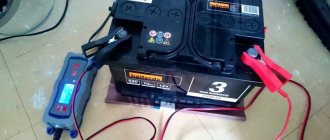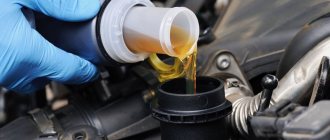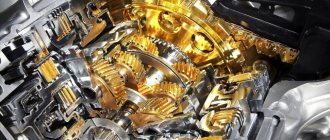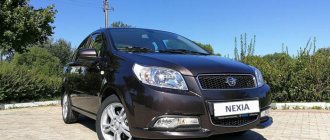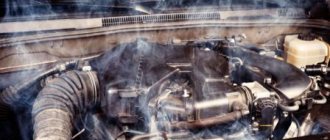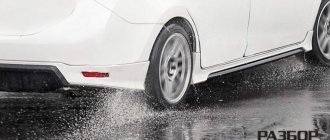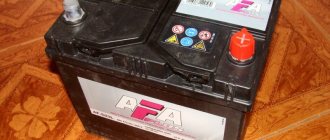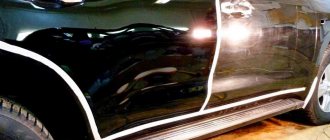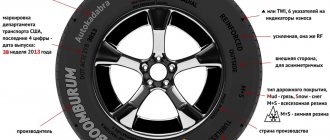Sound insulation of car fender liners is a set of actions aimed at increasing comfort in the cabin by treating the surface with special sound and vibration insulating materials.
When done correctly, it is possible to eliminate the annoying impacts of stones on the wheel arches, as well as the noise of rubber when driving at high speed (especially important in winter, when the wheels have winter tires).
What are the features of such work? Is it possible to do without involving specialists? What materials will be needed? We will discuss these and other points in the article.
When and why to soundproof the fender liner?
Service station technicians and people with experience in similar work are confident that proper sound insulation of fender liners is a guarantee of solving the following problems:
- Reducing noise from stones that fly out from under the wheels and hit the arches.
- Protection from salt and snow that gets into the nooks and crannies of the metal and accelerates the corrosion process.
- Reducing the destructive effect on the body.
- Increased comfort in the cabin by eliminating extraneous sound.
For greater efficiency it is recommended:
- Carry out noise insulation of the fender liner along with the treatment of wheel arches and the bottom with vibration and sound-absorbing material.
- Use high-quality products that can absorb extraneous sounds and vibrations, as well as withstand elevated temperatures.
Materials and tools
The quality of the work performed on soundproofing the wheel arches of a car largely depends on how high-quality materials the car owner will use. The market offers a wide range, but not every option can satisfy the buyer in terms of price, quality or other criteria. When choosing a soundproofing material that will be used to soundproof the arches of your car, you should clarify the specifics of the different compositions. If you use traditional sheet materials, they will give a good result, but they will not be able to last long in the fender liner area.
Due to exposure to moisture and various reagents that are sprinkled on roads in winter, the sheets will gradually begin to peel off. Corrosion will be added to this problem, from which sheet insulators will no longer be able to protect. Therefore, it is most effective to use liquid materials, which show excellent performance as highly effective means for sound insulation of car fender liners. This includes mastics, liquid rubber in combination with sheet materials. Here everyone decides for himself. The standard set of tools and materials consists of:
- soundproofing material;
- mastics (it is better to take rubber-bitumen ones);
- brushes;
- rollers;
- gloves to protect hands;
- pattern;
- patterns.
Ways to soundproof fender liners
Experts highlight the following options for sound insulation of fender liners:
Processing arches from inside the car.
It is believed that this is where the work should begin.
First, the surface is cleaned, treated with special disinfecting compounds, and then glued with Bimast.
For greater effect, the top is pasted with sound-absorbing material (as an option - Accent) or other material.
Thanks to the use of this technique, it is possible to solve the main problem - to reduce the level of noise coming from the wheels into the cabin.
Processing arches from the outside.
This option is most popular among car enthusiasts. The algorithm of actions is as follows. First, the fender liners are dismantled (if they were installed).
Afterwards, the metal is cleaned of the anti-corrosion coating, treated with degreasing compounds and glued with vibration-damping material (one of the options is the use of Bimast Bomb or Shumoff Prof. 8 F).
During the work, attention is paid not only to the metal part of the arch, but also to the fender liners located from the inside (the side that “looks” at the body).
Do subsequent activities as desired. The best option is to glue everything using Splen (Izolon Tape).
Pay special attention to the thickness - it should be maximum (8 mm).
When applying sound insulation to the outside, be aware of the risk of metal corrosion.
To avoid such problems and protect the body part from damage, treat non-glued areas with anti-corrosion agent (an alternative is to use a special mastic).
Please note that the classic soundproofing kit is not suitable for external treatment. If you decide to do such work, then be prepared for the consequences in the form of low efficiency and corrosion.
External sound insulation of arches.
There is another option - processing the arches from the outside. Use special compounds that reduce noise levels (they are similar in structure to mastic), the so-called liquid noise insulation.
The advantage of such means is effective vibration damping and sound insulation.
Is it possible to do this work yourself?
As many car enthusiasts claim, the entire range of activities can be carried out in a garage.
All you need for this:
- Several hours of personal time;
- Knowledge of the technical part. Before starting work, study what, how and where you will glue;
- Availability of necessary materials (purchase in advance). We will consider below what is required to complete the work;
- A certain amount on hand. The level of costs depends on the quality of the selected products. On average, processing four fender liners will require 1500-2000 rubles (the most optimistic forecast).
Preparation for work and order of execution
The first thing to start with is to prepare the equipment and materials for work. Otherwise, you will be distracted by going to the store and end up wasting a lot of time.
If the car does not have plastic fender liners, then the material is applied directly to the metal of the arches.
As for the soundproofing of the fender liner itself, it is carried out using the following products:
The master recommends vibroplast, which is applied first. The advantage is a high mechanical loss coefficient and, accordingly, excellent damping properties.
The best option is to use Bimast Bombs KMP, for which the coefficient mentioned above is 0.4 units.
Due to the rigidity of the material, it can be used not only in small areas, but also for soundproofing the entire car. In this case, the brand of the car does not matter.
The advantage of Bimast Bomb lies in its composition. The basis is a bitumen-mastic substance. The surface is metallized on top and covered with an additional layer on the bottom for protection.
During the installation process, provide pre-heating, for which use a hair dryer.
The warming up process is carried out as follows:
- Remove the top layer and lay the product with the sticky part facing up. It is necessary to lay only on a washed, clean, dry metal surface;
- Heat the surface with a hairdryer until it shines. Do not overheat and do not bring to a boil;
- Turn the material over and glue it to the surface to be treated, then use the mounting roller to distribute the heated product.
After the vibration damper comes the turn of Spleen, which can be the second or third layer.
- High efficiency;
- Easy to apply. This is primarily due to the presence of an adhesive layer, which eliminates the need to apply other compounds;
- Affordable price;
- Excellent thermal insulation qualities. Practice has shown that the use of this material guarantees heat retention, which is especially important in winter. If you live in a region with harsh winters, then this feature is only a plus;
- Reliability of fixation. After completion of the work, the material is firmly fixed, and it can only be torn off with great effort.
How to make sound insulation with your own hands
You can glue the fender liners to soundproof your car yourself. The work takes several hours. Simultaneously with the processing of the plastic parts, the wheel arch is also soundproofed.
The market offers a wide range of soundproofing materials, among which vibroplast is the most popular. Elastic material is applied to the fender liner as the first layer and provides optimal damping characteristics, the gravel springs back from the surface, and the noise from the impact is dissipated.
Vibroplast brand "Bimast Bomb" is used as a noise absorber for the entire body. The base is a bitumen-mastic composition, the top layer of insulation is a foil layer that reflects the sound wave as efficiently as possible. The sound insulator is produced in sheets or rolls and has an adhesive layer protected by a backing. You need to glue it on a clean surface.
The second layer on the fender liner (also on the wheel arch, if the metal itself will make noise) is to apply a soundproofing layer, for example, splen. There are 6 types of splen insulator according to the sound repellency coefficient. For arches, it is recommended to use the brands “StP Splen”, “Shumoff P4” with waterproof glue, “STK Splen”, “STK Splen F”.
The splenes are glued in the second or third layer after laying the vibration layer. The work is always completed by applying a layer of liquid rubber or anti-gravel to the sound insulation. Liquid rubber is preferable because, after hardening, it creates a millimeter-thick elastic layer that completely protects the wheel arch liner or metal from moisture penetration.
Peculiarities
Vibroplasts and splenes have an adhesive base, so before work it is necessary to cut out as large parts of the material as possible. The splenes are glued overlapping, the vibration panels are glued end-to-end. The insulation is freed from the adhesive backing, applied to the fender liner and carefully rolled with a hard roller to expel the air trapped between the insulation and the fender liner.
Sound insulation of car fender liner
In some cases, the insulation is heated with a construction hair dryer, the material becomes more elastic and ensures the tightness of the joint. When removing the wheel arch, a complex of anti-corrosion protection is carried out, the plastic fender liner is washed and dried.
What you will need
Let's look step by step at how to soundproof a car's fender liners using the KIA Ceed hatchback as an example. The kit comes standard with plastic panels that are secured into the arch with pistons. What is needed to make noise 4 parts and arches:
- vibroplast “Gold” - 2 sheets (60x80 cm, thickness 2.3 mm);
- insulation “Izolontape” 3004 (100x150 cm, thickness from 4 mm);
- pistons for fastening (during dismantling, half of the standard clips fail);
- Body-930 mastic - 1 jar;
- anticorrosive liquid “Rast Stop” - 1 b.;
- degreaser, alcohol is possible;
- brushes, gloves;
- kit for dismantling the fender liner (screwdrivers);
- construction rubber spatula or wooden plate (smooth out insulation sheets).
Prepare rags for wiping, choose a well-ventilated room, it is better to carry out work in the fresh air in calm weather at a temperature of plus 18-22 degrees.
Process step by step
All work is carried out after dismantling the wheel. If there is a lift, the duration of work is reduced. In a garage, you will need to place a jack under each wheel one at a time.
- Unscrew the pins holding the fender liner in the wheel arch.
- Remove the mudguard, pull out the fender liner, and wash it.
- Degrease the outer surface of the plastic panel that is in contact with the arch.
- Cut out the vibroplast panels, stick them on, roll them with a roller. It is recommended to seal at least 70% of the outer surface of the fender liner with vibration material.
- Glue the parts of the insulation tape, coat the joints and edges of the sound insulation with Body-930.
- Do not seal the places where the part comes into contact with the body. This will make the plastic protection difficult (and sometimes impossible) to install correctly in the arch.
- Apply “Body-930” anticorrosive agent to the metal with a brush. This will enhance sound protection and provide protection against corrosion.
- Spray Rust Stop into hidden arch cavities and joints.
Sound insulation of fender liner close up
In wheel arches, the anticorrosive agent creates a protective layer and dries in 10-15 minutes. After drying, install the fender liners and wheel.
Without lockers
You can make noise in a place without using plastic protection. The procedure is relevant for cars that are not equipped with plastic protective elements as standard.
Sound insulation is carried out on the metal of the body:
- Remove the wheel and wash the arch. Since there is no protection against dirt, wet dust is pressed behind the wheel, which is difficult to wash off without a Karcher. It is recommended to use brushes.
- Degrease the surface of the arch with nitro solvent.
- Apply several layers of liquid sound insulators (Dinitrol 479, Noxudol AutoPlastone). Rubber-bitumen mastics can be used. Apply the compositions with a brush in 3-4 layers.
- Noxudol 3100 sound insulator is sprayed in 4-5 layers. Before each subsequent application, the previous layer must dry for 5-10 minutes.
Sound insulation without “lockers” (fender liners): work order
If the car does not have plastic fender liners installed, then the meaning of external sound insulation comes down to finishing the metal surface of the body.
- Clean the arches from dust and dirt. The best option is to use a washing machine that supplies high pressure water.
- Let the metal dry.
- Degrease the surface using nitro solvent.
- Use liquid or classic compositions to impart soundproofing properties. The choice of options is wide. If you don’t have a large sum on hand, give preference to multi-bitumen mastics. If there are no problems with money, then you can take a more expensive composition.
- Before applying the composition, cover the parts that you do not plan to cover with soundproofing material. Use plastic film for these purposes (fix it with tape).
- If you decide to use liquid sound insulation for arches, apply the first layer of mastic and let it dry.
- Treat the surface with a second layer, roll the product and dry.
Please note that the number of coats applied to the body may vary. This information can be easily gleaned from the manufacturer's instructions.
It also reveals the drying features of each applied layer.
Some “craftsmen” recommend making sound insulation in layers, that is, applying mastic, Splen, mastic, and so on (in a circle).
In this case, Splen will quickly peel off, and corrosion will not be long in coming.
Sound insulation with plastic fender liners: work procedure
It is believed that the only purpose of plastic fender liners is to protect the arches from dirt or water. But we cannot fail to note one more function - the ability to use the product in the form of a sound shield.
Proceed as follows:
The disadvantage of the considered option is that when temperatures fluctuate, Splen can move away from the surface. To avoid this, use another option:
- Attach rubber plates to the inside of the lockers; these can be “Comfort” sound insulators based on foam rubber (alternatively, they can be cut from car mats).
- Fix the product with waterproof glue.
The difficulty of the rubber mat method is that the rubber material is hard and difficult to cut.
In addition, it is important to use the glue correctly - it must have waterproof qualities. Otherwise, the layer will not last long.
The peculiarity of the “Comfort” sound insulator is that it has a fleecy surface, does not rot and is able to soften shocks, while it is self-adhesive.
Liquid insulators
The advantage of insulators in the liquid version is the ease of application to surfaces. They are applied with special sprayers, which helps to apply them to any complex surfaces. Another advantage is the speed of application. Liquid isolates are based on rubber. Both internal and external parts can be processed with such materials.
You can use detergent during the degreasing process. The application of layers will depend on the technology and manufacturer's instructions. You can apply one to three layers. If you do not have special tools for spraying liquid isolates, you can use a brush. The minimum layer thickness must be at least 3 mm.
When applying products, drivers do not think about how the overall weight of the car will increase. The advantage of the liquid product is that it slightly increases weight , from 10 to 20 kg. If the product is applied to visible elements of the car, it can be painted to match the body color.
Sound insulation is one of the ways to reduce background noise when operating a car, which plays a significant role on long trips.
Sound insulation of wheel arches is one of the components of comprehensive sound insulation. The main nuances are the use of high-quality materials and high-quality work.
How to achieve the best result from processing arches from the outside?
To get the maximum effect when performing work, consider the following points:
- If you don’t have lockers, buy them, they provide more effective sound insulation;
- Clean the arches from dirt and anti-corrosion applied at the factory;
- Treat the clean, degreased surface with a noise-absorbing compound (optionally, 2-component Noise Liqu >
Its advantage is reliable corrosion protection and excellent sound insulation;
Glue the lockers from the inside of the Bimas Bomb;
The best option is to use stainless steel fasteners.
Types of sound insulation
The factory equipment of models in the budget segment often does not include the installation of a fender liner. The metal of the wheel arch is treated with aniticor; noise insulation is provided by soft sheets of vibration-absorbing material, which are glued to the metal.
Noise insulation with special material
You can make noise on your car's fender liners using several types of material, each of which has its own characteristics, advantages and disadvantages. There is an option to install fender liners, which many drivers consider an alternative to vibroplastic and foil materials.
Plastic
Plastic fender liners are installed as standard sound insulation for budget models, for example, VAZ 2114. The part must be additionally covered with vibroplast to reduce the noise level.
The panels are well suited to protect the wheel arch from gravel impacts. Heat-resistant ABS does not corrode and is installed on pistons and self-tapping screws.
Nonwoven
The non-woven part provides optimal sound insulation of the interior. The needle-punched layer has high strength, does not absorb moisture, dust, dirt, and reliably protects the arch from corrosion. The non-woven element is considered universal, but it also has a drawback.
At a temperature of minus 1 degree, it stretches and may sag. This leads to the fact that during movement the wheel will wear off the protection, exposing the metal of the arch.
"Liquid" fender liners
This is a protective layer that is sprayed from a can into the wheel arch and provides reliable protection against corrosion. The liquid composition penetrates into hidden cavities and forms an elastic, elastic film up to 2 mm thick. Reduces noise in the cabin by 10% and is widely used as an anti-corrosion coating for metal. For complete sound insulation, it is necessary to make additional noise from the arch using vibroplast or rubber panels.
Soundproofing fender liner
Liquid protection is good to use simultaneously with plastic elements. Plastic coated with soundproofing material will provide protection from extraneous sounds, and the “liquid” fender liner will not allow pockets of corrosion to form under the plastic.
